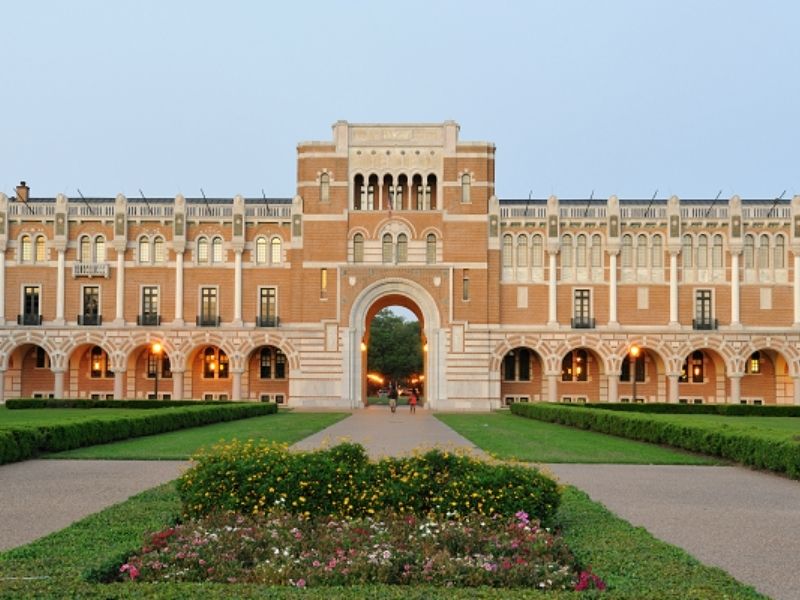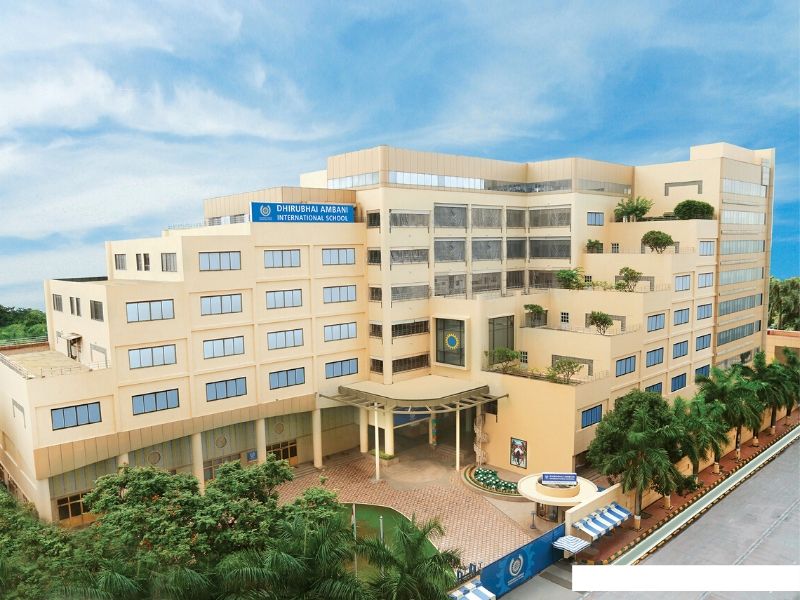Often billed as the Harvard of the South, Rice University, USA boasts a teacher-student ratio of 1:5 and outstanding faculty which includes Nobel and Pulitzer prize winners.

Set in a 285 acre wooded campus in Houston, Texas, Rice University, although low profile internationally, enjoys an enviable reputation in the US for its high quality academic programmes, teaching and research. The US News and World Report (2007) ranked it 17th among America’s best colleges and it is heralded as one of the New Ivies by the Kaplan/ Newsweek College Guide. Often billed as the Harvard of the South, Rice combines the small size and teaching emphasis of a liberal arts college with the scholarship of a major research university. It boasts a teacher-student ratio of 1:5 and outstanding faculty which includes several Nobel and Pulitzer prize winners as well as Fullbright scholars.
Founded in 1912 as the William Marsh Rice Institute for the Advancement of Literature, Science and Art, Rice University was named after the eponymous Massachusetts-born businessman who endowed the institute with $4.1 million as a gift to the city of Houston, where he made his fortune. Since then the endowment corpus of Rice University has grown to $4.1 billion the fifth-highest per capita among US universities. This huge corpus allows the university to charge lower tuition, room, and board fees than most comparable private universities. Consequently Rice is routinely rated a best buy school.
A member of the Association of American Universities, Rice offers an eclectic range of academic subjects across six schools (see box) to its approximately 3,000 undergrads and 2,000 postgrads. A private, non-sectarian and co-education institution, Rice follows an Oxford-inspired residential college system which requires every freshman to be assigned to one of the university’s nine colleges(Baker, Brown, Hanszen, Jones, Lovett, Martel, Sid Richardson, Wiess, and Will Rice).
Houston. The administrative capital of the Lone Star state of Texas, Houston is the fourth largest city in the United States with a population of 4.7 million. It is home to NASA’s Johnson Space Center; the Texas Medical Center, (the world’s largest centre for medical research, education, and patient care) and the base of 21 Fortune 500 companies.
Promoted as the urban forest, Houston boasts more than 508 parks and open areas, an arboretum, a rose garden, Japanese gardens, and seven golf courses. Houston summers are hot with temperatures averaging 90oF during the height of summer, which lasts about 95 days. But the winters are pleasant, with average temperatures in the 60s, and snow or ice is a rarity.
Campus facilities. Rice University sprawls across 285 acres of heavily-wooded land adjoining Hermann Park, Houston’s most historically significant public green space, and the Houston Museum District. Next door is the world’s largest medical complex, the Texas Medical Center, and a neighborhood commercial centre, known as Rice Village. The university campus also houses several inter-disciplinary research institutes, schools and think tanks including the Rice Architecture School, James Baker Institute for Public Policy, Rice Engineering Design and Development Institute, the Rice Design Alliance, and the Smalley Institute for Nanoscale Science and Technology.
The Fondren Library, located in the Academic Quad, subscribes to approximately 36,800 current journals (print and electronic) and houses 2,314,000 print volumes and 2,900,000 units of microform. The collections include audiovisuals, music recordings, scores and other special formats.
Sports facilities include the Rice Stadium, an American football facility which can seat 72,000 people (more than the total number of alumni); Reckling Park, Rice’s baseball stadium; Autry Court (basketball, volleyball); the Rice Track/ Soccer Stadium and the Jake Hess Tennis Stadium.
Other on-campus facilities include the Rice Coffehouse, pubs, bookshop and a cinema. Moreover Rice offers its students membership of over 215 clubs and organisations.
Admission. The admission process is highly selective. For instance for its class of 2006, of the 7,079 students who applied only 700 were admitted. The minimum eligibility criterion for admission into the university’s undergrad degree programmes is completion of Plus Two/ class XII. Students must also write the Scholastic Aptitude Test (a minimum of two subject tests are required) or ACT and the Test of English as a Foreign Language (minimum score: 600). The admission form should be accompanied by a $50 fee and specified documents. While the university’s needs-blind admission policy is restricted to US citizens, international students can apply for merit scholarships.
For more information write to the Admission Office, Rice University, 6100 Main St, MS17 PO Box 189, Houston Texas 77251-1892, United States. Tel: 001 713 3487423; e-mail: [email protected]; www.rice.edu.
Accommodation. All new students are assigned to one of Rice’s nine residential colleges. Each college houses approximately 250 freshmen and upperclassmen; another 80 or so members of each college live off campus. The residential college system lies at the core of the Rice undergraduate study programmes. Each college functions as a self-supporting unit, boasting its own government, budget, sports teams, and dining facility.
Degree programmes. Rice University is internationally reputed for the quality and diversity of its undergrad and graduate programmes. Academic schools include humanities, social sciences, music, architecture, natural sciences and engineering (see box). The Jesse H. Jones Graduate School of Management offers Masters degrees.
Scholastic options at Rice
Rice University offers a wide range of four-year undergrad and graduate programmes across six academic schools.
School of Humanities. Art history, classical studies, English, French studies, German and Slavic studies, Hispanic studies, history, kinesiology, linguistics, philosophy, religious studies, secondary education certification, visual arts
School of Social Sciences. Anthropology, economics, mathematical economic analysis, political science, psychology, sociology
Shepherd School of Music. Performance, composition, music history & theory
School of Architecture. Architecture, urban design
Wiess School of Natural Sciences. Biochemistry and cell biology, chemistry, ecology & evolutionary biology, earth science, maths, physics and astronomy
George R. Brown School of Engineering. Bioengineering, chemical and biomolecular engineering, civil and environmental engineering, computational and applied mathematics, computer science, electrical and computer engineering, mechanical engineering and materials science, statistics
Tuition and other fees (2006–2007): $38,440
NB US $=Rs.44.50
Summiya Yasmeen





















